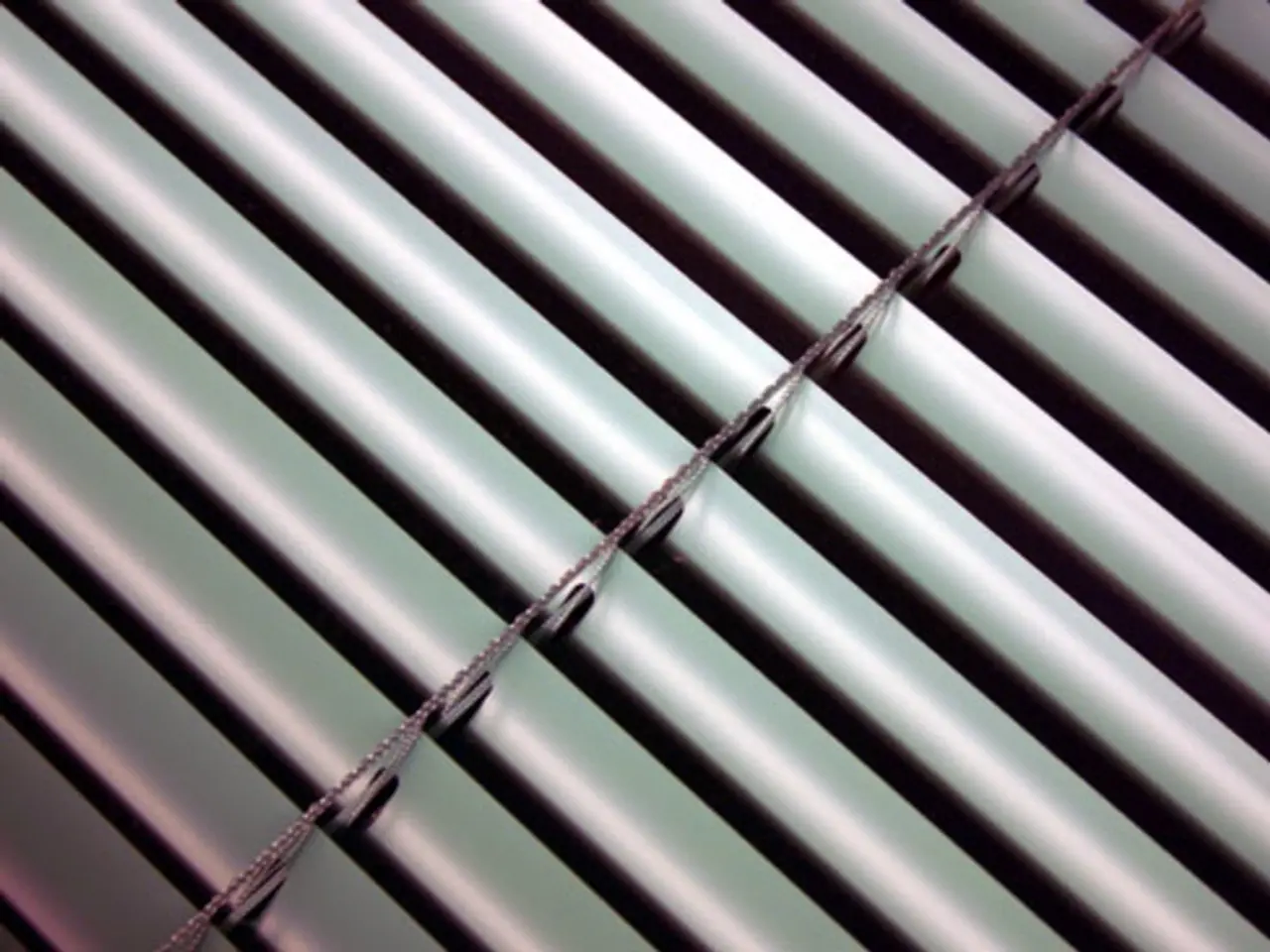Methods for Securing Windows: Lock Systems, Barriers, and Safety Guidelines for Children
In the realm of child safety, one area that often requires attention is window safety. According to recent statistics, more than 3,300 children under the age of five are injured annually due to window falls, and tragically, an average of eight children aged five and under die each year from falling out of windows [5]. To help parents and caregivers create a safer home environment, here are some expert-recommended strategies for childproofing sliding windows.
One of the most effective methods is the use of window stops or window wedges, which allow for ventilation while preventing the window from opening fully. These devices can be easily installed and adjusted to fit your window size, offering quick and effective childproofing without blocking airflow [1][4]. Security bars, or Charley bars, can also be installed inside the window track or mounted higher out of a child’s reach to physically block the window from sliding open beyond a safe limit.
Another crucial aspect of childproofing sliding windows is the prevention of injuries from broken glass. Applying a translucent window safety film can contain shattered glass if the window breaks, significantly reducing the risk of injury [1]. While it does not stop the glass from breaking, it holds pieces together, reducing cut hazards.
For windows with blinds or shades, using cordless roller shades or cordless blinds eliminates the risk of strangulation or entanglement from cords, a well-known hazard for young children [3].
In addition, padding sharp corners around the window frame or sill softens impact if a child bumps against them, helping prevent injuries from falls near windows [1]. Some parents enhance safety by creating or installing additional locks or double locking mechanisms that include rubber inserts or grips to keep sliding windows securely locked when needed, further preventing unintended opening by children [2].
When it comes to double-hung windows, window guards and window stops are common solutions for preventing children from falling out. For casement windows that use a crank to open, it's best to remove the crank and store it out of reach [6].
Window guards, which are metal or plastic bars spaced less than 4 inches apart, are another effective method for preventing children from falling through [7]. Keyed locks can also be an affordable solution, ranging from $10 to $20, making it virtually impossible for children to open windows [8].
Basement egress windows require a different treatment, focusing on secure locks that adults can easily operate and avoiding placing furniture nearby that children can climb. It is also important to rearrange furniture away from windows to prevent children from climbing and falling [9].
In summary, the best approach to childproofing sliding windows combines restricting window opening with physical stops or bars, securing glass with safety film, eliminating cord hazards with cordless treatments, and softening edges with padding. This comprehensive childproofing strategy ensures both safety and usability of sliding windows in homes with children.
It's essential to remember that safety measures should be implemented before children are old enough to run around and climb up to the windows. And, as children grow and develop quickly, it's always a good idea to overprotect them, ensuring their safety in the home environment.
References: [1] Consumer Reports. (2021). Childproofing: Preventing window falls. Retrieved from https://www.consumerreports.org/window-safety/childproofing-prevention-of-window-falls/ [2] SafeKids.org. (2021). Window safety tips. Retrieved from https://www.safekids.org/window-safety-tips [3] The Window Covering Safety Council. (2021). Cordless window coverings. Retrieved from https://www.windowcoverings.org/safety/cordless-window-coverings [4] Window Guard Network. (2021). Window wedges and stops. Retrieved from https://www.windowguard.org/products/window-wedges-and-stops [5] National Safety Council. (2021). Injury facts. Retrieved from https://www.nsc.org/resources/injury-prevention/safety-topics/injury-facts [6] The Window Covering Safety Council. (2021). Window guards. Retrieved from https://www.windowcoverings.org/safety/window-guards [7] The Window Guard Network. (2021). Window guards. Retrieved from https://www.windowguard.org/products/window-guards [8] The Window Covering Safety Council. (2021). Window locks. Retrieved from https://www.windowcoverings.org/safety/window-locks [9] SafeKids.org. (2021). Basement window safety. Retrieved from https://www.safekids.org/window-safety-tips/basement-window-safety
A contractor might recommend installing window stops or window wedges as a home-improvement measure for safety, as they allow ventilation while preventing the window from opening fully [1]. To prevent injuries from broken glass, applying a translucent window safety film could be a part of a homeowner's lifestyle changes for childproofing sliding windows [1]. For a home-and-garden project, some parents opt for cordless roller shades or blinds to eliminate strangulation or entanglement hazards [3].




